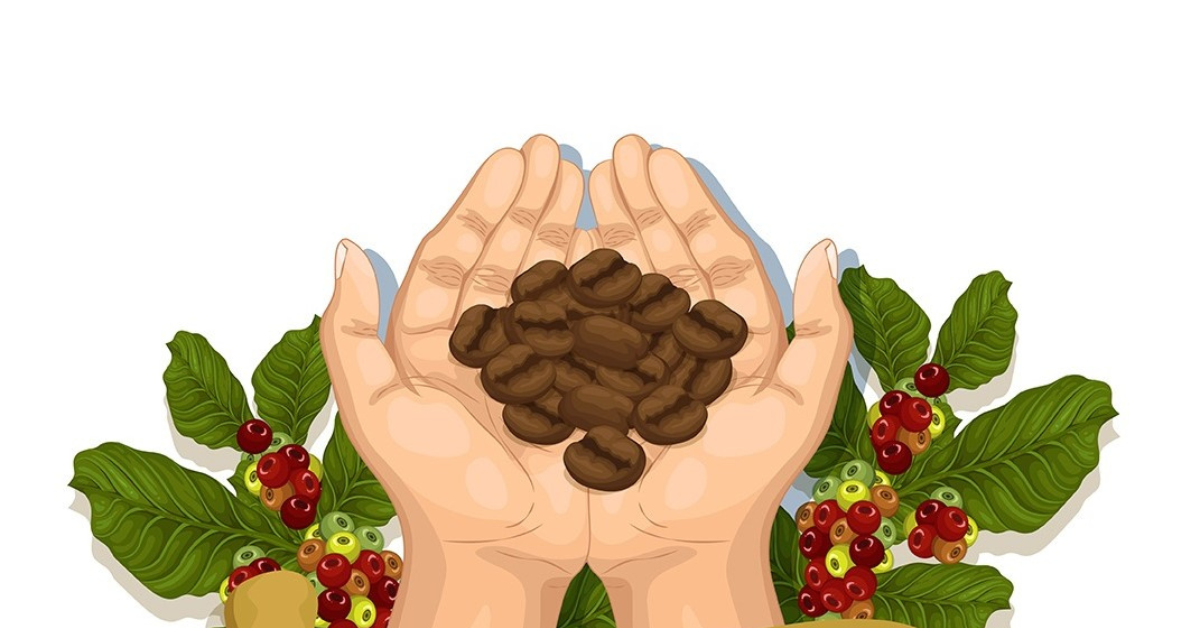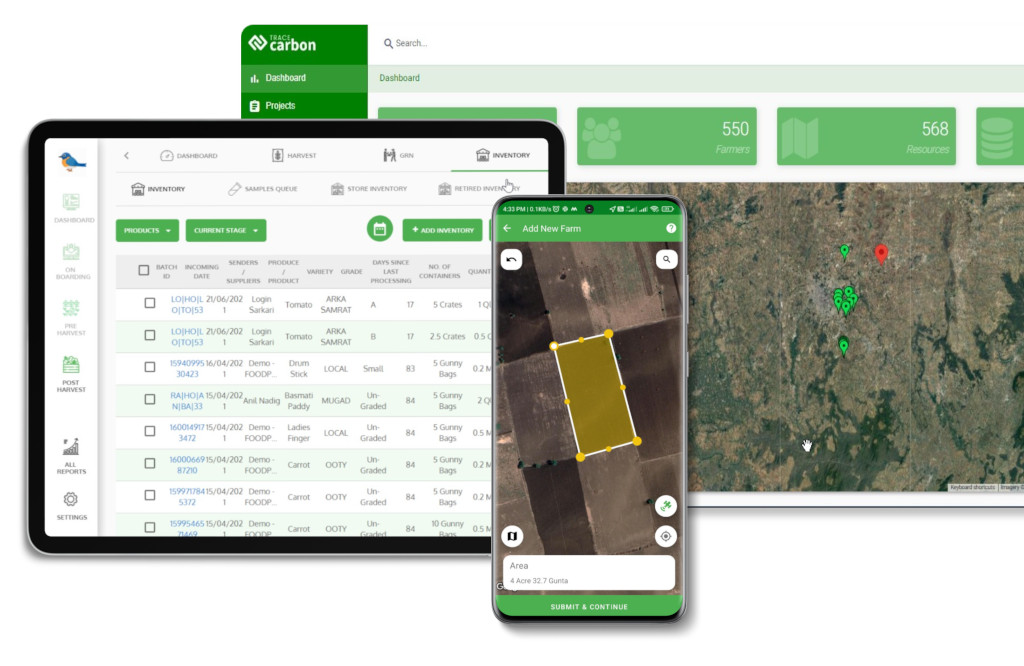Contact: +91 99725 24322 |
Menu
Menu
Quick summary: Learn how Ethiopian coffee exporters can meet EUDR requirements with geolocation, legal proof, and digital traceability tools to retain EU market access.

Ethiopian coffee exporters can comply with the EUDR by ensuring deforestation-free sourcing, providing precise geolocation data for coffee plots, and verifying legal production. They must implement a risk assessment process and maintain traceability systems to document their supply chain from farm to export. Digital tools and supplier engagement are key to maintaining compliance and audit readiness.
This is the new reality for Ethiopian coffee exporters under the European Union Deforestation Regulation (EUDR). As of 2025, access to the EU market hinges not just on quality or certification—but on hard geolocation data and documented proof that coffee was produced legally and without contributing to deforestation. Without the required compliance data—especially farm-level geolocation in formats like GeoJSON—exporters risk having shipments blocked at EU borders. Even long-standing trade relationships can be disrupted if supply chain transparency is not proven to EU standards. For many Ethiopian producers and exporters, the consequences could mean financial loss, reputational damage, and exclusion from one of the world’s largest coffee markets.
This guide breaks down what the EUDR requires, from deforestation-free sourcing to traceability and risk assessments. It also highlights how Ethiopian coffee exporters can navigate these new demands using digital traceability tools, collaborative supplier engagement, and smart data strategies to remain competitive—and compliant—in the evolving global market.
Key Takeaways
The EU Deforestation Regulation (EUDR) is a landmark policy requiring companies to ensure that key commodities, including coffee, are not linked to deforestation or illegal land use after December 31, 2020. All coffee imports into the EU must now be backed by due diligence that includes precise geolocation data of the plots where coffee was cultivated and proof of legality in the country of origin. This marks a significant shift from voluntary sustainability schemes to mandatory, data-driven compliance.
Coffee production often intersects with deforestation hotspots, particularly in regions where traceability is weak and smallholders dominate. Green coffee, due to its global demand and complex supply chains, is now under scrutiny to improve transparency and environmental accountability. The EU aims to ensure that even the early stages of coffee production—at the farm or plot level—are visible, legal, and deforestation-free.

Ethiopia, the birthplace of Arabica coffee, is home to millions of smallholder farmers and some of the world’s most ecologically rich coffee-growing zones. While this biodiversity and heritage offer strong market appeal, the fragmented nature of the supply chain poses unique compliance challenges. Unlike industrial-scale producers, Ethiopian exporters often source from small plots without standardized land records or digital traceability. However, this can also be a unique advantage: the traceability challenge in Ethiopia creates a compelling reason for value chain partners to adopt digital-first compliance strategies that distinguish them from less adaptable competitors.
Don’t let compliance challenges stall your exports.
Read our EUDR Coffee Compliance Guide to get expert strategies tailored for Ethiopian exporters.
Need help with farm mapping? Explore our Geolocation Requirements for EUDR blog to learn how to capture accurate GPS data and meet EU standards with confidence.
To export coffee to the European Union under the EU Deforestation Regulation (EUDR), exporters must meet five core compliance requirements designed to ensure products are legal, deforestation-free, and fully traceable. Here’s an in-depth look at what’s required:
Each plot of land where coffee is cultivated must be mapped using geolocation data. For plots under 4 hectares, a point coordinate is sufficient, while larger plots require polygon boundaries. This geospatial information must be submitted in digital formats (e.g., GeoJSON) to prove traceable origin.
Exporters must confirm that no deforestation has occurred on the coffee-producing land since December 31, 2020. This typically involves comparing satellite imagery or land-use databases to verify that natural forests have not been cleared for cultivation. Accurate geolocation data is essential to perform this verification.
Exporters must demonstrate that the coffee was grown in accordance with local laws in the country of origin. This includes compliance with laws on land ownership, forest management, labor, and environmental protections. Documentation must be collected from farmers or cooperatives and kept on file.
Before coffee can enter the EU market, exporters must upload a Due Diligence Statement to the EU’s TRACES portal. This declaration confirms that the coffee is legal, deforestation-free, and fully traceable. No product may be sold in the EU without this submission.
All documentation—including geolocation files, risk assessments, supplier declarations, and DDS records—must be stored for at least five years. This ensures traceability and accountability over time and supports audits or investigations by EU authorities.
Together, these requirements represent a shift toward data-driven environmental compliance. Exporters who can meet them will retain access to the lucrative EU coffee market and demonstrate leadership in sustainable, transparent trade.
Ethiopian coffee exporters face a unique set of challenges in meeting the EU Deforestation Regulation (EUDR) requirements, largely due to the structure and realities of their supply chains. While Ethiopia’s coffee sector is rich in biodiversity and smallholder tradition, these same strengths pose logistical and technical barriers to compliance.
1. Fragmented Supply Chains (Cooperatives & Smallholders)
Most Ethiopian coffee is produced by smallholder farmers and aggregated through cooperatives. This creates a complex and decentralized supply network, making it difficult to trace beans back to specific plots of land. Managing data from thousands of dispersed growers requires robust coordination and clear chain-of-custody protocols.
2. Lack of Digital Land Records
Many smallholders operate without formal land titles or cadastral records. This complicates the verification of legal land use, a core requirement under the EUDR. Without government-issued land documentation, exporters must rely on alternative forms of proof—such as community attestations or cooperative certifications—which may lack legal standardization.
3. Offline Geolocation Data Capture
Geolocation data is often collected in remote areas where GPS-enabled devices may function, but data transfer to central systems is delayed or fragmented due to lack of internet access. This results in offline data silos, creating challenges in consolidating accurate, EU-ready traceability files like GeoJSON.
4. Document Standardization Across Local Languages
With over 80 languages spoken in Ethiopia, documentation from farmers, cooperatives, or regional authorities may vary in format, language, and content. Standardizing this information into compliant, auditable records—especially for legal land use or supplier declarations—requires translation, validation, and structured data handling.
5. Connectivity Gaps for Field Teams
Field agents and enumerators tasked with collecting farm-level data often work in areas with poor or no mobile/internet connectivity. This hinders real-time data transmission, delays compliance timelines, and increases the risk of manual errors or data loss.
These challenges highlight the need for localized digital solutions, strong cooperative engagement, and scalable traceability infrastructure. Exporters who can adapt to these realities—through mobile-friendly tools, offline syncing capabilities, and community-based legal verification—will be better positioned to meet EUDR requirements while maintaining Ethiopia’s vital role in global coffee trade.
Complying with the EU Deforestation Regulation (EUDR) requires a structured and traceable approach to sourcing, documentation, and reporting. Below is a step-by-step guide tailored for Ethiopian coffee exporters to achieve full EUDR readiness.
Begin by identifying and digitally registering all actors in your supply chain, especially smallholder farmers and cooperatives. Each profile should include Know Your Customer (KYC) details—such as name, location, cooperative membership, and production capacity—along with an initial mapping of the farm plot(s). This forms the basis for traceability and risk assessment.
Field teams or enumerators must visit each coffee farm and collect geolocation data using GPS-enabled devices. For farms larger than 4 hectares, a polygon boundary must be mapped; for smaller plots, a point may suffice. The geolocation data must be exported in .geojson format to meet EU submission standards.
Using remote sensing or satellite imagery, analyze whether the farm’s current coffee production area was forested after December 31, 2020. This “deforestation check” is crucial to ensure compliance. Many digital platforms now offer automated forest-change detection using open satellite datasets (e.g., Sentinel, Landsat).
Gather and store all relevant documentation in a centralized, secure system. This includes land ownership evidence, legal compliance declarations, cooperative agreements, and any documents required to verify lawful production. Metadata—such as farmer ID, harvest dates, and volumes—should be linked to each farm plot for audit-readiness.
Once all data and documents are validated, generate and submit the Due Diligence Statement (DDS) via the EU’s TRACES portal. Many digital compliance tools allow exporters to auto-fill and submit DDS forms, minimizing error and ensuring consistency with stored data. No shipment may enter the EU without this step.
Following this structured workflow allows Ethiopian coffee exporters to meet EUDR’s technical and legal requirements efficiently. Digital tools that support offline capture, geospatial analysis, and documentation management are essential for scaling compliance across smallholder networks.
TraceX ‘s EUDR Compliance platform designed to help agri-exporters—especially in complex, smallholder-driven ecosystems like Ethiopia’s coffee sector—comply efficiently with the EU Deforestation Regulation (EUDR). Here’s how it solves the core challenges exporters face:
TraceX enables field agents to register farmers using a mobile app, capturing key KYC data, cooperative affiliation, and GPS-based plot boundaries. Geolocation is automatically exported in GeoJSON format, meeting EU technical specifications for farm traceability.
Discover how farm mapping is helping Nigerian cocoa suppliers meet EUDR requirements.
Read the Case Study: Ensuring Deforestation-Free Cocoa Sourcing to see how digital tools drive compliance and impact on the ground.
The platform includes real-time validation of geospatial data, flagging issues like invalid coordinates or overlapping boundaries. It also performs automated risk scoring based on region, land use, and deforestation history—essential for EUDR’s risk assessment and mitigation requirements.
TraceX connects to trusted global datasets such as Hansen Global Forest Change and JRC’s Global Forest Watch to verify land cover changes post-December 2020. This helps exporters perform deforestation checks without needing separate GIS tools.
The platform streamlines Due Diligence Statement (DDS) creation by pulling verified data from the supply chain and formatting it for upload into the EU TRACES portal. This automation ensures accuracy, reduces delays, and simplifies regulatory submissions.
Designed with the realities of rural Ethiopia in mind, TraceX works offline and supports local languages, allowing cooperatives and field teams to collect data even in low-connectivity zones. Synced data uploads once internet access is available, ensuring no data is lost.
Ethiopian coffee exporters can preserve—and even strengthen—their position in the EU market by embracing digital traceability, geolocation mapping, and robust documentation systems. While EUDR compliance may seem daunting, it offers an opportunity to modernize supply chains, protect forest ecosystems, and build deeper trust with global buyers. Exporters who act early, invest in the right tools, and work closely with cooperatives and farmers will not only meet EU requirements but also future-proof their businesses for a more sustainable, transparent trade landscape.
Get the insights you need to navigate EU regulations with confidence:
EUDR Coffee Buyer’s Guide – What EU buyers expect and how to meet their standards
EUDR Due Diligence Explained – Step-by-step breakdown of risk assessment and documentation
Coffee Supply Chain Examples – Real-world EUDR compliance in action from origin to EU shelf
Start reading now and build a supply chain that’s export-ready, traceable, and trusted.
They need geolocation files (GeoJSON), legal land use proof, risk assessments, and a Due Diligence Statement submitted via the EU TRACES portal.
By onboarding farmers digitally, using GPS tools for plot mapping, and integrating mobile-based platforms that support offline data collection and multilingual use.
Non-compliance can lead to shipment rejections, market access bans in the EU, and reputational risks, making proactive compliance essential for exporters.
